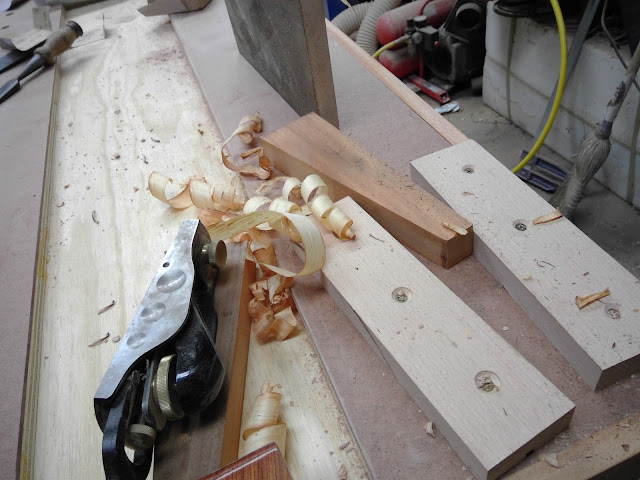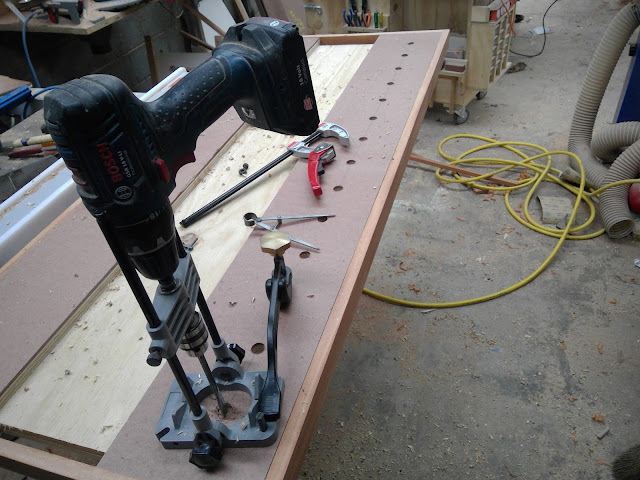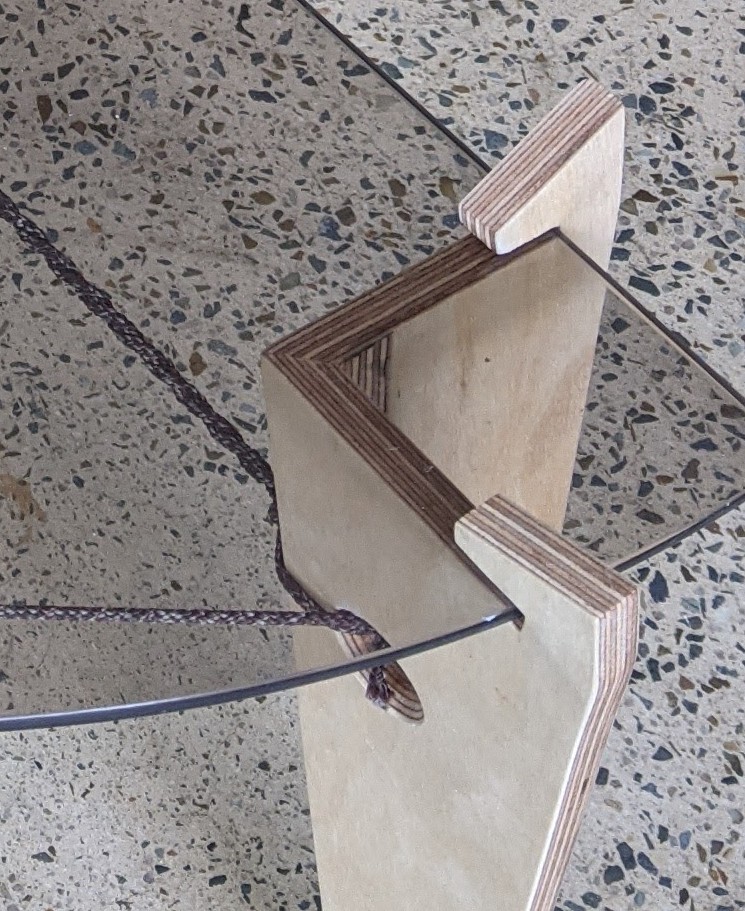Work Bench
Enthusiastic, beginning woodworkers look for a place to discover their skills. They read about traditional benches; material costs and required skills are both intimidating. Such great fulfilment can be had when woodworking that I hope the people to whom I talk feel encouraged to go out and experiment with their own creativity. How simply and cheaply can we get these people a bench to work on?
They need: a means of holding various shapes, sufficient inertia to steady the strokes of work, as much versatility as possible, a surface that forgives indiscretion and a construction that can be achieved with simple tools.
There is no universal answer! There are many possibilities. Here is one!
Find a ready made set of legs. These can be purchased, but are cheapest when you explore recycling opportunities. Unwanted tables are plentiful and cheap. Get hold of the strongest and heaviest available. Stand back, appraise what you have found and eliminate every doubt with excessive reinforcement. The more reinforcement, the more kilograms you are adding.
However, the real worksite is the bench top. In this case 1500mm x 600mm.
A single sheet of structural grade 15mm ply ($45) is sufficient to create three layers when leaving a well in the middle. These layers are glued and nailed together. Plywood doesn’t take kindly to a belting with a hammer so this surface needs protecting. Masonite packing material ($0) is nailed, not glued. Using no glue makes it easy to replace. An easily repairable surface accepts that a bench in a general workshop is unlikely to be limited to wood and that grubby brutal work is always going to happen. Surface damage won’t be a disaster.
The edge of a bench takes a bit of a belting too. This is nailed not glued. I found mahogany decking shorts ( 5m @ $4/m).
Every bench needs to hold work. Here, dog holes and wedges do the job. Cutting dog holes is a cool idea. Lots of ready made hardware relies on dog holes, so having them available extends holding possibilities.
Part of this exercise was to avoid the use of fancy and expensive tools. Here was my solution to drilling holes at 90 degrees without using a drill press.
 |
| Once the first dog hole had been drilled I could use a hold down for the rest. Note the clamp in the back ground it was for the first hole, but could have been used for all. |
It is difficult to work without a vice, but even that can be home made with scraps and a wedge. Again, these are fixed without glue. Screw heads are set below the surface to minimise the chance of contact with cutting edges.



